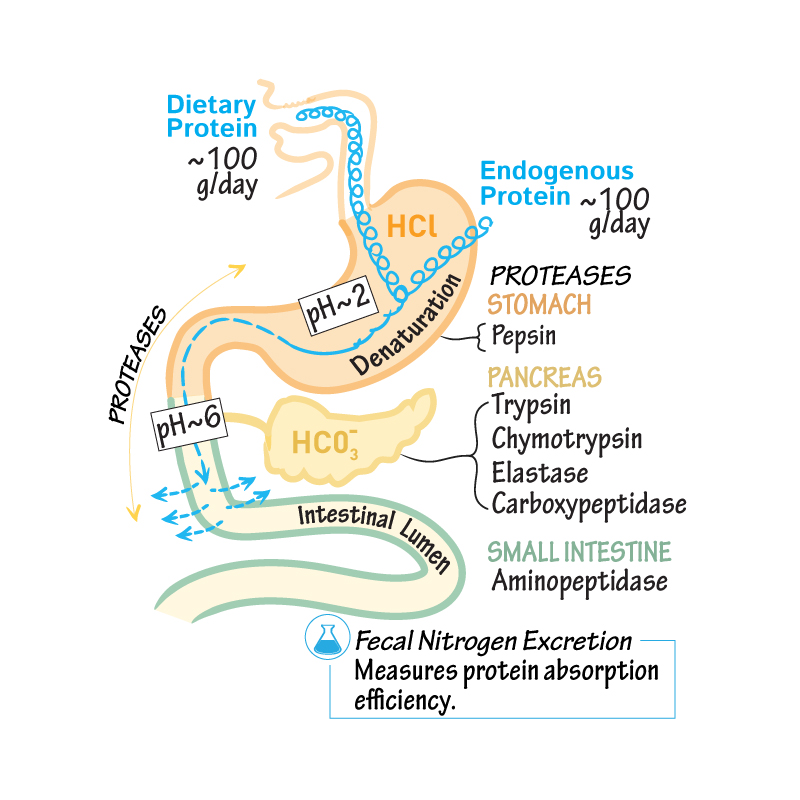
- * To begin, draw a head and esophagus.
- Next, draw the stomach, then the small intestine, and the pancreas.
- Indicate that in Western nations, we consume ~ 100 grams/day of dietary protein (70 to 100 grams/day); we see that protein is in its coiled (folded) state.
- Indicate that another ~ 100 grams/day of protein (35 to 200 grams/day) enters the gut endogenously these are the nitrogen-containing materials that pass into the gut: the digestive enzymes, desquamated cells, bile salts, phospholipids, lysed cells, plasma proteins, etc…).
- Now, indicate that we use the laboratory value of fecal nitrogen excretion to measure protein absorption efficiency.
- Poor protein digestion and absorption means that proteins pass through our GI system and into our fecal waste, unabsorbed.
Protein Digestion/Absorption
Start 3-Month Free Access!
No institutional email?
Start your 1 week free trial, now!
- * Denote that protein digestion generally refers to protein breakdown and absorption.
- Denote that this occurs through:
- Denaturation
- Peptide bond cleavage (which, itself, is commonly referred to as digestion)
- Peptide Uptake
- Amino Acid Absorption
- Denote that denaturation refers to protein unfolding (uncoiling), which occurs in the highly acidic gastric milieu, where the pH is ~ 2.
- Peptide bond cleavage refers to the enzymatic activity of proteases (peptidases), which catalyze hydrolytic peptide bond cleavage, most prominently by pancreatic enzymes within the proximal small intestine, where the pH is ~ 6.
- Peptide uptake refers to the uptake of short peptides into enterocytes (brush border cells along the small intestine), where they are further cleaved into individual amino acids.
- Amino acid absorption refers to the diffusion and transport of amino acids out of enterocytes and into the surrounding capillaries for systemic dispersion.


